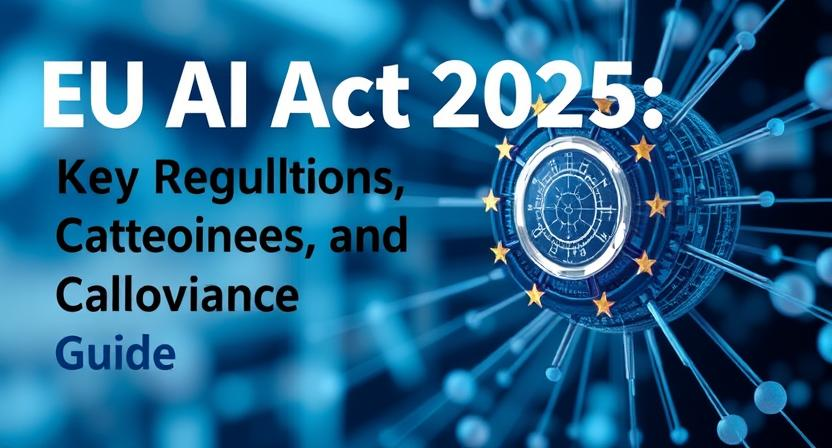Introduction The European Union has officially implemented the EU AI Act as of February 2, 2025, marking a groundbreaking step in global artificial intelligence (AI) regulation. This first-of-its-kind legislation ensures AI systems are developed and used responsibly, emphasizing safety, transparency, and human rights. With clear risk classifications and strict compliance measures, the EU AI Act is set to reshape the AI landscape for businesses and developers worldwide.
Understanding the EU AI Act
The EU AI Act introduces a risk-based approach to AI regulation, categorizing AI systems into four distinct levels:
- Unacceptable Risk AI (Banned): AI systems that pose a direct threat to public safety and fundamental rights are prohibited. Examples include social scoring by governments and real-time biometric surveillance in public spaces.
- High-Risk AI (Strict Regulation): AI systems impacting critical sectors such as healthcare, law enforcement, and education must undergo rigorous risk assessments and be registered in an official EU database before deployment. Developers of high-risk AI systems must also implement robust data governance measures to ensure ethical AI usage.
- Limited-Risk AI (Transparency Requirements): AI applications like ChatGPT and generative AI models must ensure transparency by informing users that they are interacting with AI-generated content. Organizations using limited-risk AI must provide clear disclosures, user guidance, and mechanisms for user feedback.
- Minimal-Risk AI (Low Regulation): AI systems such as spam filters and recommendation algorithms face minimal regulatory obligations under the Act, as they pose negligible risks to users.
Penalties for Non-Compliance
To enforce compliance, the EU AI Act imposes substantial financial penalties:
- Severe Violations: Fines of up to €35 million or 7% of annual global revenue (whichever is higher).
- Lesser Violations: Fines of up to €7.5 million or 1% of annual turnover.
- Failure to Provide Transparency: Fines for organizations failing to meet transparency and documentation requirements.
These penalties highlight the EU’s commitment to fostering an AI ecosystem that prioritizes ethical and responsible development.
Objectives of the EU AI Act
The EU AI Act is designed to balance innovation and risk management through three core objectives:
- Enhancing Safety: By categorizing AI risks, the Act aims to protect individuals and society from potential harm. It also mandates human oversight in high-risk AI applications.
- Ensuring Transparency: Developers must provide clear documentation on AI system functionalities, disclose when AI is in use, and ensure that automated decisions can be explained.
- Encouraging Ethical AI Innovation: While imposing regulations, the Act also promotes responsible AI development that aligns with EU ethical standards and respects privacy laws.
Implementation Timeline
The EU AI Act is being implemented in phases to allow businesses and developers to adapt:
- February 2, 2025: Immediate ban on unacceptable-risk AI; companies must ensure AI literacy among employees.
- August 2025: Transparency rules come into effect for general-purpose AI models, requiring organizations to provide disclosures regarding AI-generated content.
- August 2026: High-risk AI systems must comply with regulatory requirements, including risk assessments and documentation.
- August 2027: Additional regulations on high-risk AI, including third-party audits and enhanced data governance, come into force.
Impact on Businesses and Developers
The EU AI Act significantly impacts businesses, startups, and developers working with AI technology. Companies must:
- Conduct an AI risk assessment to determine the classification of their AI systems.
- Implement transparency measures for AI-generated content, including watermarking and labeling.
- Ensure AI governance frameworks align with EU regulations to avoid penalties.
- Maintain compliance documentation and conduct internal audits regularly.
- Keep up with regulatory updates and engage with EU regulatory bodies when necessary.
How Businesses Can Prepare
Organizations using AI should take proactive steps to comply with the EU AI Act by:
- Investing in AI Compliance Teams: Businesses should establish dedicated teams to monitor and ensure AI compliance.
- Adopting Ethical AI Principles: Developers should integrate ethical AI practices, such as fairness, accountability, and transparency, into AI system design.
- Training Employees on AI Literacy: AI literacy programs should be introduced for employees to understand AI risks and compliance requirements.
- Developing AI Risk Mitigation Strategies: Organizations should identify potential risks associated with their AI applications and implement mitigation measures.
- Engaging with Regulators: Businesses should proactively engage with regulatory bodies to ensure they meet compliance requirements.
Global Influence of the EU AI Act
As the first comprehensive AI regulation, the EU AI Act is expected to influence global AI governance. Countries outside the EU may adopt similar AI regulations, leading to a more standardized approach to AI compliance worldwide. Tech companies operating internationally must align their AI practices with EU standards to maintain market access.
Conclusion
The EU AI Act represents a pivotal moment in AI regulation, setting a global benchmark for responsible AI development. With its risk-based approach, strict penalties, and phased implementation, the Act aims to ensure AI technologies thrive ethically and transparently. As businesses navigate this evolving landscape, compliance with the EU AI Act will be crucial for long-term success in the AI-driven world.






